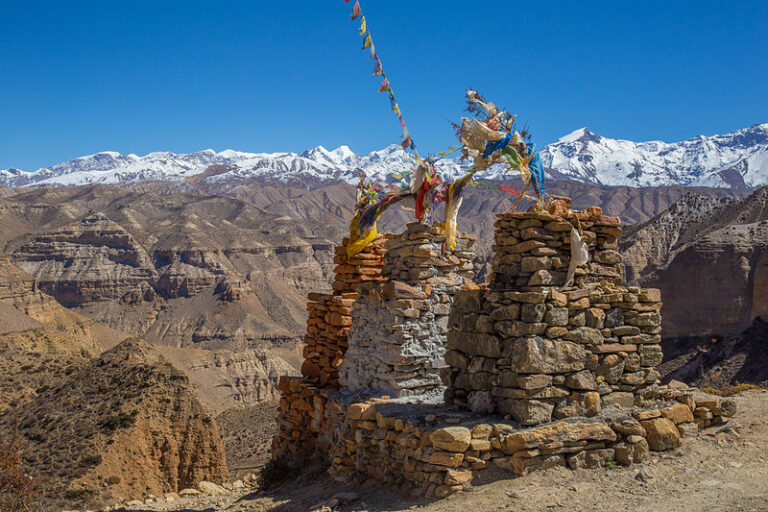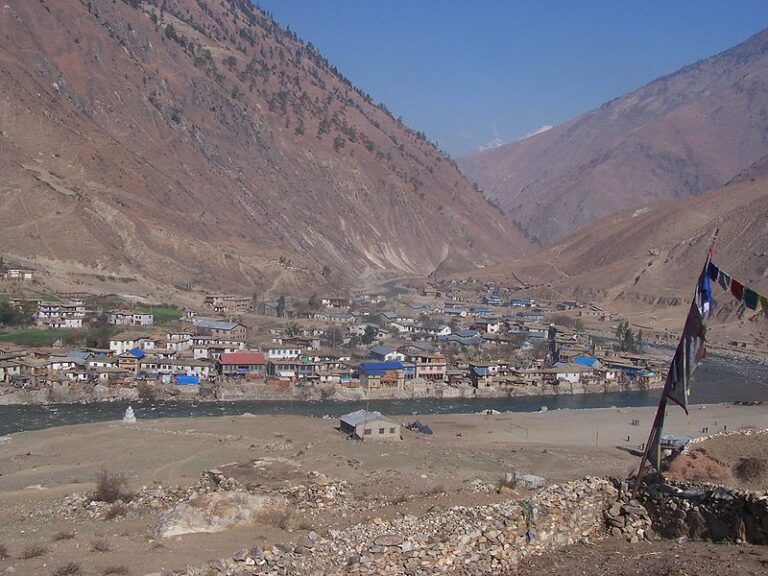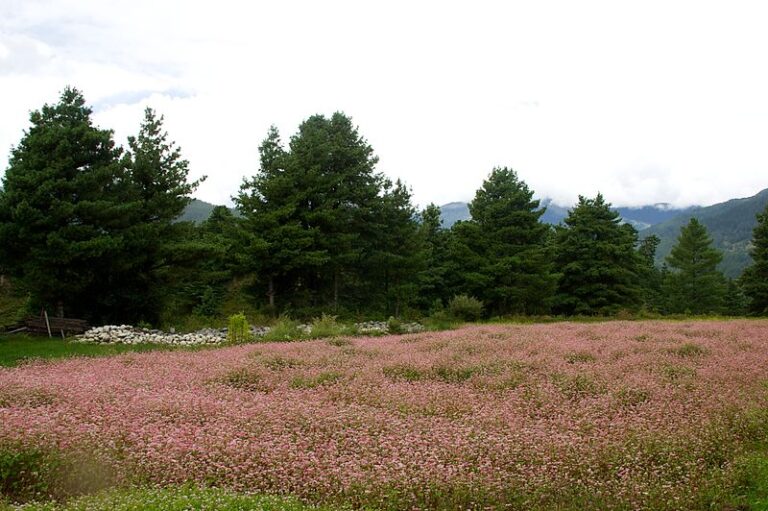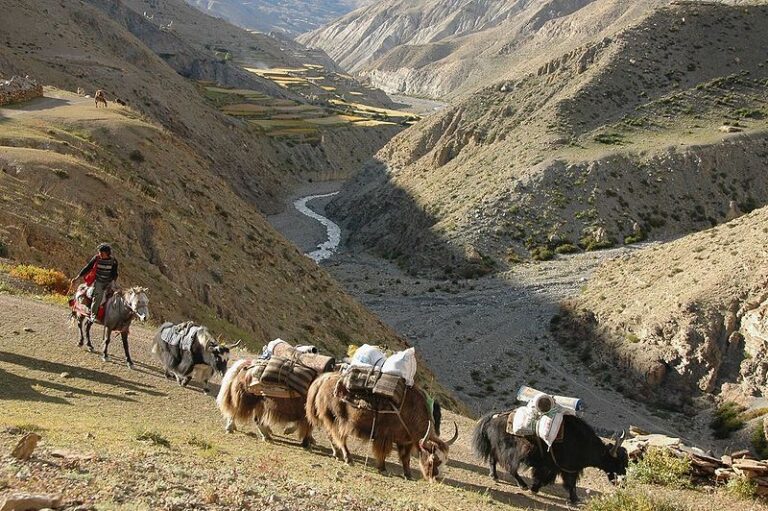Lower Dolpo is one of the most valuable gifts of nature which is located western part of Nepal bordering with China. Trek into the Lower Dolpo purpose to discover dozens of religious sites, mesmerizing places and hidden valleys where locals are dwelling far from the modernity and preserving their unique culture, tradition, religion and ethnicities.
Lower Dolpo Trek start from Jhupal, which is a beautiful hamlet of Bheri district of Nepal where can be reach a short flight from Kathmandu to Nepalgunj and Nepalgunj to Jhupal. The trail passes through the forest of Pine, Rhododendron, Bamboo, juniper and grasslands with impressive views of wide meadows, brown rocky hills, charms landscapes and cascading waterfalls in lower region of Dolpo district. After couples of days walk; trekkers enters higher region of Dolpo district and Shey Phoksundo national park that purpose to see beautiful views of pastureland, Shey Phoksundo Lake, hidden valleys, cultivated lands and massif views of Kanjirowa peak 6883m, Kanti Himal 6859m, Churen Himal 7381m, Mukut Himal 6638m, Putha Hiuchuli 7246m and Dhaulagiri 8167 meters high.
Apart from high Himalayan views; the lower Dolpo trek commands to explore dozens of ancient settlements where peoples are dwelling far from modernity and preserving their cultures, traditions, costumes, religions and ethnicities. Most of the peoples are following Shamanism and Bon-Po sector of Buddhism so trekkers get great chance to explore some of the old monasteries known as Yanajer monastery, Sandul Gompa, Tshowa monastery and Shey monastery, which are well decorated with prayer flag and image of Buddhist deities and mantras.
During the trekking period; trekkers passes through sub-tropical forest to high alpine forest that offers to see some wildlife such as weasels, deer, Ghoral, black bears, monkeys and Langurs at lower region and the higher region is known as habitats of musk deer, blue sheep, marmot, wild dog, Himalayan Thar, snow-leopards, pheasant, raven, Tibetan snow cock, vulture, Himalayan griffon and lammergeyers. If trekkers are travelling during the spring season then they will see many kinds of blossoms such as blooming rhododendron, magnolia, wild rose and orchids.
The history of Dolpo
Dolpo appears in historical records since c. 8th century. In the time from the 6th century to the 8th century the Tibetan Yarlung dynasty conquered most Tibetan-speaking territories. This seems to have caused a southward migration towards Dolpo and the peripheral areas along the upper Kali Gandaki River (Lo and Serib). In 842, Tibet fell apart, and Dolpa fell under the kingdom of Purang. Purang and Dolpo became temporarily part of the kingdom of Guge in the 10th century, but soon became separate again when King sKyid lde Nyi ma mgon divided Guge among his three sons.
During the reign of the Ya-rtse king A-sog-lde around 1253 both Dolpo and Serib were lost to the ruler of Gungthang, mGon po lde. The latter then reunited both the Dolpo and Serib and classified them among one of three provinces of mNga’ ris. It is also known from historical documents that Mongolian troops reached Dolpo to conquer this province when they conquered many parts of Tibet and finally handed over the power to the ruler of the Sakya period.
In the 14th century Dolpo fell under its eastern neighbor the Kingdom of Lo, which controlled the trans-Himalayan trade route through the Kali Gandaki. The Dolpo had to pay tax and travel to Lo-manthang to provide manual labor.
For some time between the 15th century 1440 and the 16th century, Dolpo was temporarily independent and ruled by a king from the Ra nag dynasty.
In 1769, the Gorkhas conquered Kathmandu and established the kingdom of Nepal, which would soon reach more or less the country’s modern extent. In 1789, Nepal swallowed the Lo kingdom and with it Dolpo. The kingdom’s attempt to wrest nominal suzerainty over Tibet from China ended in a massive Chinese intervention that left Nepal paying tribute to China.
Peoples and their income source – According to the Nepal census of 2011 there are 36700 peoples are living in the Dolpo district. Although; the population would be more than the declared number. Most of the settlements are settled between 3600 meters and 4700 meters above the sea level. People grow only the cabbage, Wheate, Buckwheat, Garlic, carrots, and barley which won’t be enough for the whole year so peoples are depending on herbs. They collect many kinds of herbs from the forest like Panch Aule, Tin Aule, Nirmasi, Jatamasi, Shilajeet, Himalayan salt, and Yarshagumba and they sell it to Tibet and they buy all eatable things from Tibet.
Major Festivals of Dolpo region – Shey Festival – is one of the most important festivals in the Dolpo region which is held every twelve years in the month of August in the Dolpo region during the ‘Dragon year’ of Tibetan Calendar. It is a grand celebration for including Upper Dolpo people and all Tibetan Buddhist followers. In this festival, people make circumambulating the holiest Crystal Mountain. Many devotees and pilgrimages from different places and countries come here to participate in the festival. Apart from She Festival there are hundreds of festivals in the Dolpo region known as Losar, Sagadawa, Yungney, Chhaye chu, Tse Tar, Chhaigo, Chhaiti, Keja, Yachha and Rungma which are celebrated in different places of the region with different ways.



